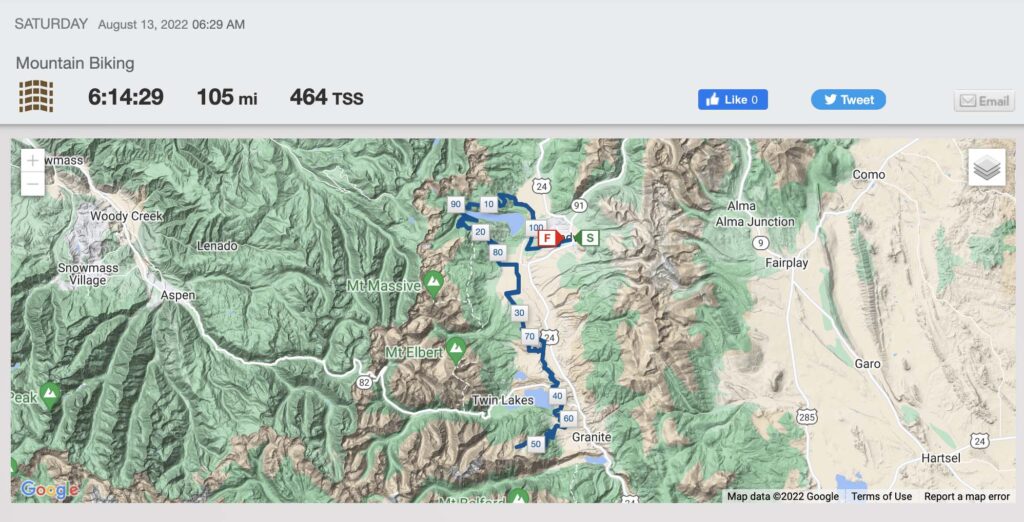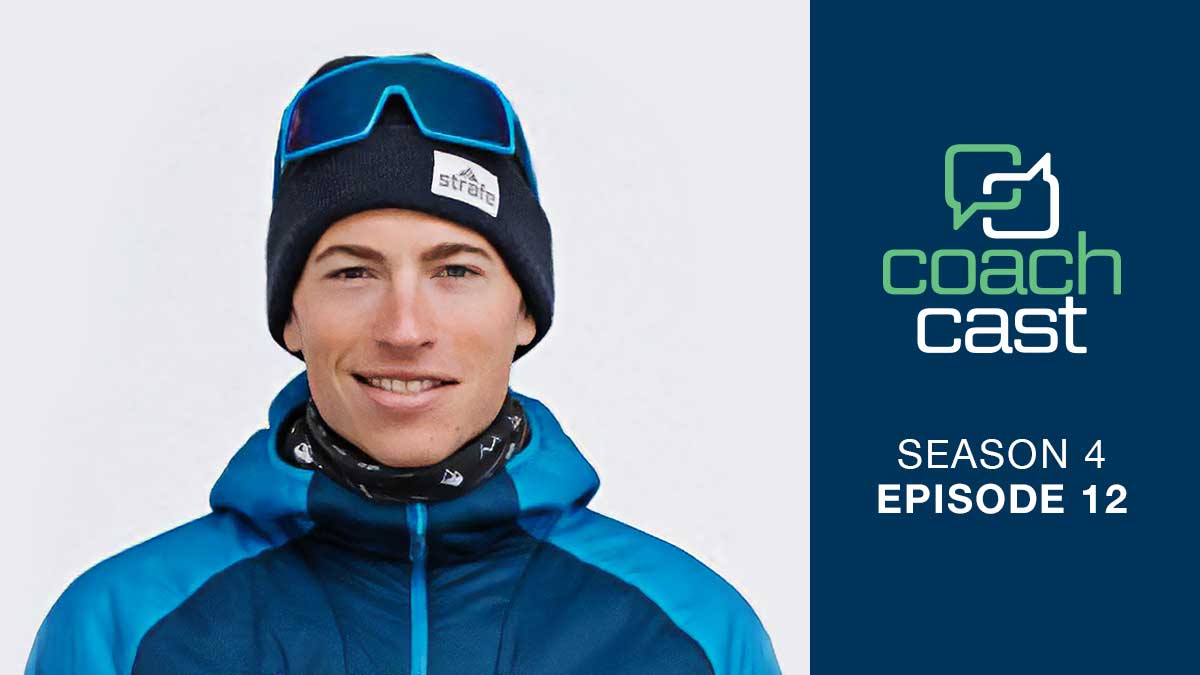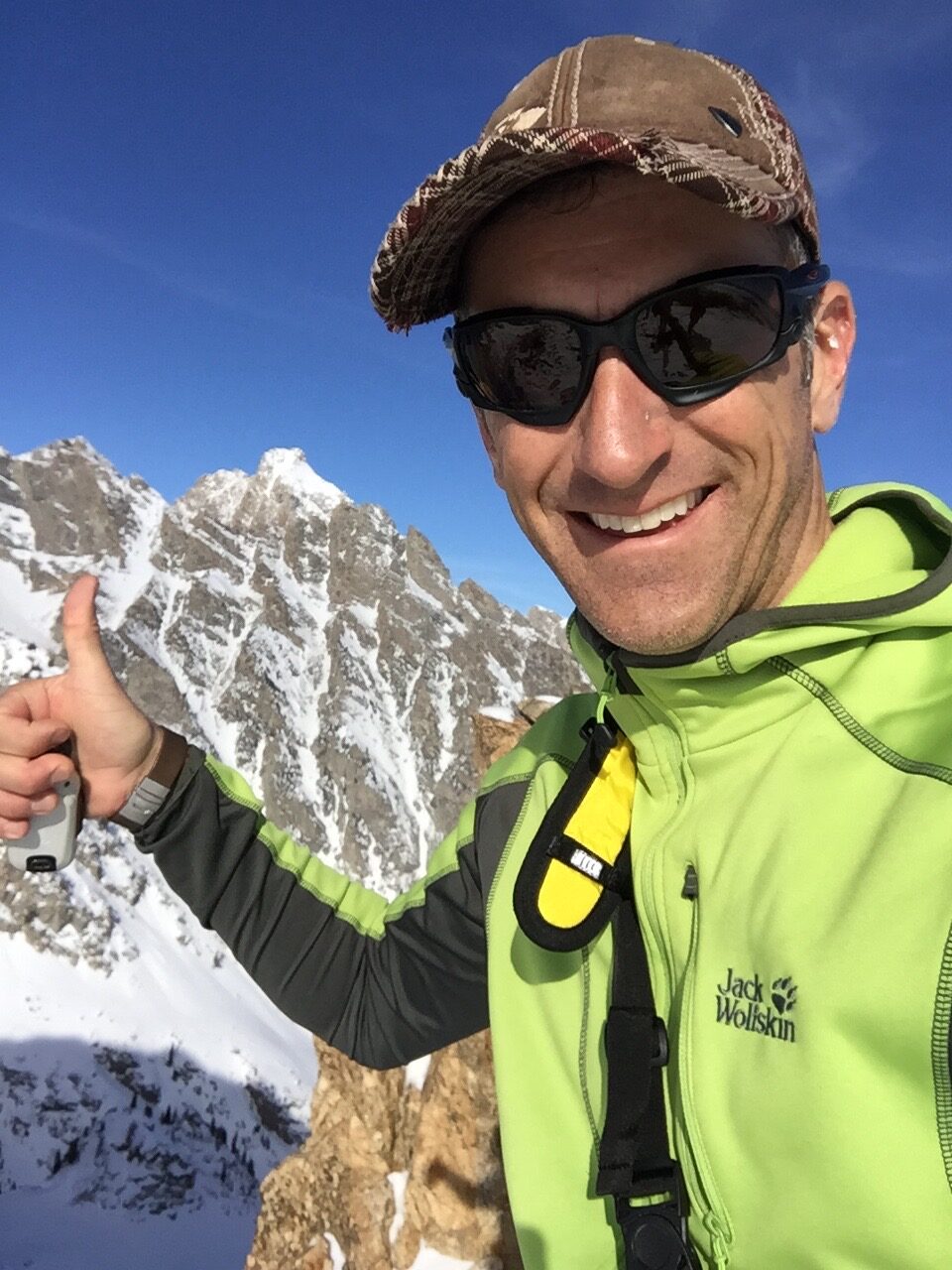Though coming to the sport later than most, John Gaston is the current U.S. National Ski Mountaineering champion and has won multiple prestigious U.S. events, including the Audi Power of Four 10 times. He is arguably the country’s best ski mountaineering, or skimo racer, and competes on the world stage in the winter.
During the summer, Gaston mountain bikes the trails near his home in Aspen to maintain fitness and revel in the high alpine environment. In August, he placed second overall at the Leadville 100 mountain bike race, ahead of a stacked field of the world’s top professional cyclists.
Listen in as Gaston reveals his training philosophy to compete at the world-class level in two different sports, balancing a growing family with running an apparel brand and the potentially limited future of elite-level skimo in the U.S.
Be sure to read an in-depth breakdown of Gaston’s training he sent via email. ⬇️

Standout Quotes
“[There’s] these just epic, heli shots and these guys in spandex with what looked like cross-country skis on their back, just ripping up and down along these ridges in Europe, all of a sudden was like, what is this? I’ve never heard of it; like, it seems so silly but also so cool. And so, in coming back from that back injury, I kind of went all-in, and I was like, you know, I haven’t even done this sport, but this is going to be my thing.”
“I’ve always, the last few years in particular — as I’ve been doing these very large annual volumes anyways — I’ve always been quite fit in the summer, but sort of purposely not race fit. Because, you know, it burns a lot of matches to stay in shape at that top-level all winter long. Especially those harder, shorter races, and I try not to overcook myself in the summer, and even this summer, I only did two [mountain bike] races. I didn’t do a whole calendar like those other guys.”
“Leadville is, at the end of the day, who can hold a sort of like tempo/sweet spot forever at super high altitudes. I mean, I live at 8000 feet, and Leadville to me still feels like breathing through a straw.”
“When you’re looking at the broader spectrum of endurance sports and in particular like cycling, rowing, cross-country skiing, these sports that don’t have the impact and sort of trauma of running. You take that out, like that thousand hours is sort of like the barrier to entry to the elite level. To medals at like World Champs Olympics, whatever it is. And I will say, the more I focused on increasing that annual volume, the more it worked.”
“I attribute some of that [training protocol] to living at a pretty high altitude, you know, 8000 feet. I feel this for me personally…I can only do so much truly high intensity in a week and recover from it at this altitude, whereas I can do a ton of volume and still recover from it. And so, for me, that’s just the form that seems to work the best.”
“I’m a little jaded by the recent Olympic decision to remove the individual event from the 2026 docket in favor of just keeping the sprint. And that, in my opinion, is going to really hurt the growth of skimo in this country. Unfortunately, I don’t know anyone, frankly, in the sport of skimo who got into it to be a sprint racer. Skimo is, by definition, an extremely aerobic event. And almost everyone who comes to it comes from a cycling or running or a backcountry skiing or cross-country skiing background. And to make it an Olympic sport, but if your event is three to three and one half minutes long, it really has very little to do with the actual sport of skimo.”
John Gaston Online
USA Skimo Team
Instagram
Strafe Outerware
Gaston Follow-Up
Gaston followed up our interview with an email talking his training through in more detail.
The following has been edited for clarity and length.
Thanks again for having me on the show. I kind of wish I had done ~five podcasts before your show because I feel I wandered around a bit and answered only a few of your questions as succinctly as I could have!
My coach, Adam St. Pierre, would have me do doubles nearly every day if he had his way! During the five weeks leading up to Leadville, he was cool with me switching it up a bit and focusing on longer single sessions, as those are a bit more specific to that event. But the rest of the year, including all winter long, we do A LOT of doubles. Frequently a three-hour main session in the morning, followed by a 90-minute easier session in the evening — often done with gym work beforehand.
I think a lot of that comes from Adam’s XC ski background and the focus on really nailing the quality of the main session while still allowing for a higher overall volume with lighter stress on the body if those evening sessions are kept easy enough. Secondarily, those evening recovery rides/skis when the body is already in a glycogen-depleted state have the added benefit of stimulating a bit more fat adaptation without compromising the quality of the first session by being low carb.
When mixing in more running and hiking, I’m forced to break the day up into doubles or triples. For example, a 90-minute run followed immediately by a 90-minute roller ski in the morning and then a recovery spin on the bike in the evening. This allows me to get more consistent skimo-specific adaptation day after day, as opposed to going for a single three-hour-plus run one day, crushing my legs and being crippled with DOMS for the next five.
Still, there are plenty of standard four to five-hour endurance days throughout all periods of the year. I like being able to knock out a big long session and totally switch off for the rest of the day afterward. The Leadville block was much more “World Tour” style, with four to six hours five to six times a week. While the sessions generated a bigger individual TSS, the added downtime/recovery from not having to gear back up for a second session was a pretty welcome relief.
It’s hard to say which style has been more effective. I will add that, despite not focusing on building “too much” top end going into Leadville and focusing almost exclusively on threshold and sweet spot work, I still knocked out the highest 20-minute test of my life and definitely had the highest one-hour threshold I’ve ever had. So even though the focus was somewhat less “fancy” than my skimo prep with VO2 blocks and the like, it was pretty obvious that the overall training load and higher aerobic capacity “raised all ships,” as they say.
Lastly, I re-calculated my training from April 1st until the present with my race-day FTP of 380w. I love tracking the numbers, but I have my reservations too: There were probably three days this entire summer that I could actually operate at a 380w FTP; the rest of the time, I was in too deep a state of fatigue to actually be able to operate at the resulting wattage zones. This is why historically, I always kept my FTP at 360w because I felt it better reflected the reality of daily training. I would still target 380w for my threshold intervals, for example, but my heart rate would be in full on VO2 max zone, and the RPE was through the roof by the final half of the workout. But if we’re all honest, this is probably how most pros operate anyway! It’s hard to convince yourself to aim lower, haha.
Pushing 380w FTP at Leadville elevation was really a “must be peaking” condition for me. That said, I realized the same fatigue-related lower TSS numbers basically applied to my skimo and running work too, which is all based on hrTSS. In the same vein, I deal with a ridiculous amount of heart rate suppression, even at 1000 hours a year of training. It’s probably related to a lack of sleep/recovery with three kids. I can go entire seasons without seeing a max HR anywhere close to what I have plugged in on TrainingPeaks that is used to calculate my zones (at least until race day). I’ve thought about knocking that down too, but at the end of the day, I’d rather the numbers all show up too low than too high. Plus, it keeps my actual race day efforts — when I’m fresh and rested — as accurate from a TSS point of view as possible.
Long story short, with the recalculations, I raced Leadville with a CTL of 134, an ATL of 143, and a TSB of 29. My TSS on the day was 394, and my NP was 302 @ 161 bpm average, 184 max. Peak 5min NP was 411w, 20min NP was 362w, and peak 1hr NP was 321w. Numbers are fun!
For skimo “A” events (World Championships, World Cups, National Championships, etc.), I’m usually running a lower CTL than Leadville, between 110-125, but a similar TSB between 20-30 most of the time. More racing, less training! I do a lot more “vert efforts” and individual length race simulations in the weeks leading up to big skimo events. I’m trying to get really sharp and also not muddying the “technique waters” as much with as many longer, slower days. I tend to feel that I need more freshness for these races — or at least less overall chronic fatigue — or else I can’t seem to access that 6th gear of suffering.



